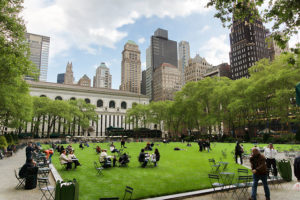
Photo Credit: Jean-Christophe Benoist CC BY 3.0
To restate, the biggest challenge facing many cities in transitioning to the knowledge economy is a shortage of “A” talent, especially true superstars.
I dealt with superstars like Jeff Bezos in my last post. Today I talk about “A” caliber talent.
What’s the difference between the two? It’s arguably a continuum in some respects, or depends on how finely grained the domain. But the superstars are the true world’s best, particularly at something that generates economic growth at regional scale.
But beyond those rare few, there’s also a shortage of just the top level talent that makes cities and organizations go.
When I started as a staffer at Andersen Consulting, I noticed right away that every department at my clients tended to have one or two people who really made the place go. For example, at one client there was a guy in networking named Phil. When I met him, he wasn’t even a manager level person, but you could tell he was just a cut above everyone else and was the go to guy for many things. I wasn’t surprised to see that years later he was running networking for a Fortune 5oo company.
This ability to be the person that makes it happen, or some equivalent level of impact, is what distinguishes the A player.
One of the things that’s most impressive about New York is just how many A level people there are – way more than anyplace else I’ve ever lived.
Just as one small example, Bryant Park is world renowned as a small urban park. There are a lot of reasons why, including the vast wealth of New York City. But it also happens that it’s run by Dan Biederman, either an A player or the superstar of a smaller domain, depending on how you want to classify him. Dan not only runs Bryant Park, he regularly consults around the country on how other cities can run similar spaces better.
But even people under Dan in the org chart are still top notch. Andrew Manshel, who used to work at Bryant Park, runs a great web site called the Place Master, with all sorts of finely detailed information about how to create great public spaces. Mostly likely, in almost any city in America, Andrew would be the #1 guy in town in placemaking.
Of course I’d be remiss if I didn’t mention that Bryant Park’s design drew on input from William H. Whyte, the godfather of successful small urban spaces.
When you take a look at the talent that’s been brought to bear on just this one small park, you start to get an insight into what makes these global cities so successful.
Smaller cities, say regions in the one to two million population range, definitely have A caliber talent. They just don’t have enough of it. This limits their bandwidth for making change. There are tons of opportunities in these places, but often not enough people with the capability level to really seize them and make them happen.
Of course what makes someone an A player is context specific. For cultural mismatch or other reasons, many great people fail in one environment only to succeed in another. So it’s not a simple matter of moving pieces around on the chessboard. Nevertheless, if the quantity of these “make it happen” type people went up significantly, a lot of cities could see some serious results.
Again, when it comes to attracting talent, in the present world you have to have at least some focus on creating or attracting A players and superstars. I’ll have some thoughts on that in a future post.
from Aaron M. Renn
http://www.urbanophile.com/2017/06/13/the-shortage-of-a-talent/
No comments:
Post a Comment